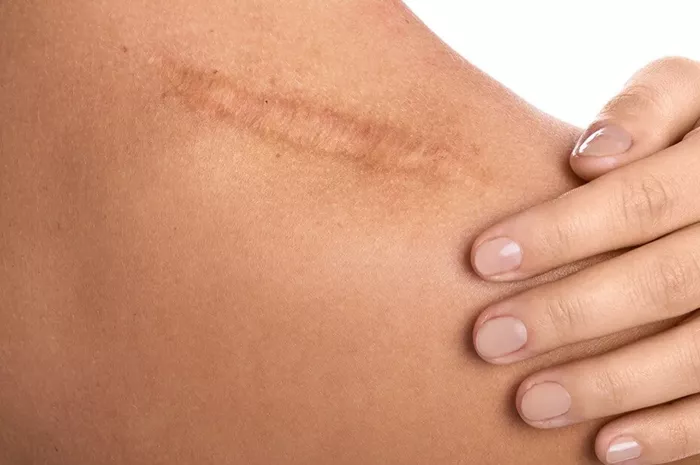Scars are a testament to the body’s ability to heal itself, but they also represent a complex biological process fraught with variables. Whether resulting from injury, surgery, or acne, scars are common yet widely misunderstood. This article will delve deep into the natural healing process of scars, exploring the factors that influence their development and the extent to which they can heal naturally. We’ll also consider the effectiveness of natural remedies and preventative measures in scar treatment and management.
Understanding Scars: The Basics of Skin Healing
Scars are the final phase of the skin’s healing process after it has suffered a wound. To understand how scars form and heal, it is crucial to comprehend the skin’s structure and the healing process.
Skin Structure and Wound Repair
The skin consists of three primary layers: the epidermis (outer layer), the dermis (middle layer), and the subcutaneous layer (deepest layer). When the skin is wounded, the body launches a healing process that occurs in three phases: inflammation, proliferation, and maturation.
Inflammation: This initial phase starts immediately after the skin is injured, characterized by redness, warmth, swelling, and pain. The body’s immune system responds by sending white blood cells to the site to combat bacteria and prevent infection.
Proliferation: During this phase, the body begins to rebuild the wounded area. Fibroblasts, a type of cell important for tissue repair, produce collagen and other substances to form a new network of tissue.
Maturation: The final phase involves the remodeling of the collagen, which strengthens the tissue and modifies the scar’s appearance.
Types of Scars
Different injuries and healing conditions can lead to various types of scars, including:
Keloid scars: Thick, puckered, itchy clusters of scar tissue that grow beyond the edges of the wound or incision. They are more common in people with dark skin.
Hypertrophic scars: Raised scars that do not extend beyond the boundary of the injury and may decrease in size over time.
Atrophic scars: Sunken or pitted scars that occur when underlying structures supporting the skin, such as fat or muscle, are lost. These are commonly associated with acne or chickenpox.
Can Scars Heal Naturally?
Scars are a natural outcome of the healing process and, while they may fade over time, they rarely disappear entirely. The extent to which a scar can heal naturally depends on several factors:
Factors Influencing Natural Scar Healing
Genetics: Some people are more prone to severe scarring due to their genetic makeup.
Age: Younger skin tends to heal faster and may result in less noticeable scars.
Skin color: Those with lighter skin might have less noticeable scars, but are more prone to sun damage which can worsen the appearance of scars.
Location and size of the wound: Wounds on parts of the body like the chest or back are more likely to develop thicker scars.
Care of the wound: Proper wound care can significantly affect the healing process and the appearance of scars.
Natural Healing and Time
Over time, most scars will become paler and less noticeable as part of the natural healing process. This can take months to years, depending on the individual’s health, the nature of the wound, and the care provided during healing.
Natural Remedies for Scar Treatment
Many people opt for natural remedies to aid in the healing of scars, although scientific evidence supporting the effectiveness of some treatments is limited.
Popular Natural Remedies
Aloe Vera: Known for its anti-inflammatory and soothing properties, aloe vera is often recommended to help reduce scar formation and encourage healing.
Vitamin E: Widely used in the treatment of scars, vitamin E is thought to help repair damaged skin. However, research is mixed, and some studies suggest it might not be effective.
Honey: Honey is an ancient remedy known for its antibacterial properties and ability to promote healing and reduce inflammation.
Essential Oils: Oils such as lavender and rosemary are sometimes used for scar treatment because of their ability to support skin health and reduce inflammation.
Effectiveness of Natural Remedies
While many individuals report positive results from using natural remedies, it’s important to approach them with caution. Not all remedies are suitable for everyone, and some can cause allergic reactions or further skin irritation.
Prevention and Minimization of Scars
Preventing a scar from forming is easier than treating one. Good wound care is essential for minimizing scar formation.
Tips for Preventing Scars
Keep the wound clean: Clean wounds are less likely to get infected and develop severe scars.
Moisturize the wound area: Keeping the wound moist can prevent a scab from forming; scabs can delay the healing process and increase the chance of a scar.
Avoid the sun: UV exposure can darken scars and make them more noticeable.
Use silicone sheets or gel: These products can help reduce scar formation by hydrating the scar and regulating fibroblast production.
Conclusion
While scars can fade, they rarely heal completely without intervention. The natural healing process of scars can be supported through proper wound care, lifestyle choices, and, in some cases, natural remedies. Understanding the factors that influence scar development and being proactive in the care of wounds can greatly reduce the long-term visibility of scars. As with any treatment, it’s advisable to consult with healthcare professionals when considering options for managing scars, especially for those that are severe or not improving.
[inline_related_posts title=”You Might Be Interested In” title_align=”left” style=”list” number=”6″ align=”none” ids=”4805,7737,7673″ by=”categories” orderby=”rand” order=”DESC” hide_thumb=”no” thumb_right=”no” views=”no” date=”yes” grid_columns=”2″ post_type=”” tax=””]
































